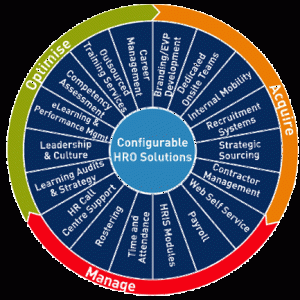
In today’s rapidly evolving digital landscape, ensuring the security of your office assets is of utmost importance. With cyber threats becoming more sophisticated and prevalent, it is crucial for businesses to employ effective office security solutions. By implementing robust measures, companies can safeguard their sensitive information, maintain customer trust, and mitigate financial risks. In this article, we will delve into the significance of office security solutions and explore various strategies and technologies that can help protect your valuable assets.
## 1. Understanding the Threat Landscape
Before we dive into the specifics, it is vital to comprehend the magnitude of security threats that modern offices face. Cybercriminals are constantly devising ingenious techniques to exploit vulnerabilities in networks, systems, and applications. Their motives may range from stealing sensitive data to conducting ransomware attacks or even sabotaging a competitor. From phishing scams and malware attacks to social engineering tactics, businesses must remain vigilant against these external threats that could compromise their assets.
## 2. Training and Awareness Programs
Even the most advanced security systems can be rendered ineffective if employees are not educated about potential risks and security best practices. Investing in comprehensive training programs is essential to creating a security-conscious workplace. By raising awareness about the latest threats and providing guidance on password management, safe browsing, and email etiquette, you empower your employees to become the first line of defense against cyberattacks. Regular workshops, simulations, and awareness campaigns can significantly strengthen your security posture.
## 3. Robust Firewall and Network Security
Office network security forms a critical part of any comprehensive security strategy. Implementing a robust firewall ensures that incoming and outgoing network traffic is effectively monitored and filtered. This prevents unauthorized access attempts and filters out potentially harmful content. Additionally, employing secure Wi-Fi protocols, such as WPA2 or WPA3, along with strong encryption ensures that your wireless network remains secure. Conducting regular vulnerability assessments and penetration testing further enhances your network’s resilience.
## 4. Secure Endpoint Protection
In today’s era of remote work and bring-your-own-device (BYOD) policies, securing endpoints like laptops, tablets, and smartphones becomes paramount. Endpoint protection solutions provide real-time monitoring, threat detection, and response capabilities. With features like antivirus software, intrusion detection, and behavioral analysis, these solutions help identify and neutralize potential risks before they can infiltrate the network. It is crucial to ensure that all devices connecting to your office network, whether company-owned or personal, adhere to a robust security policy.
## 5. Two-Factor Authentication (2FA)
Passwords alone are no longer enough to ensure secure access to sensitive systems and data. Two-factor authentication (2FA) adds an extra layer of protection by requiring users to provide an additional proof of identity, such as a fingerprint scan, facial recognition, or a one-time code received via a mobile app or SMS. Implementing 2FA across your office systems and accounts drastically reduces the risk of unauthorized access, even if passwords are compromised.
## 6. Data Encryption and Backup Solutions
Data encryption plays a pivotal role in safeguarding confidential information. By encrypting data both in transit and at rest, you prevent unauthorized users from accessing sensitive files, even if they manage to breach your security perimeter. Additionally, regular data backups are crucial in case of data loss due to hardware failures, natural disasters, or cyberattacks. Implementing robust backup solutions, preferably with off-site storage, ensures that your office’s critical data can be swiftly recovered and restored.
## 7. Physical Security Measures
While digital threats steal the headlines, physical security remains a cornerstone of any comprehensive security approach. Implementing access control measures, such as electronic key cards, biometric scanners, and surveillance systems, adds an extra layer of protection against unauthorized intrusions. Regular security audits and procedures like visitor sign-ins, lockable cabinets, and secure disposal of physical documents further enhance office security.
## 8. Incident Response and Disaster Recovery
No security strategy is complete without a well-defined incident response and disaster recovery plan. In the unfortunate event of a security breach or data loss, having predefined steps and protocols in place enables your organization to respond swiftly and effectively. Regularly testing these plans and conducting mock scenarios allow for refinement and optimization, ensuring a smooth recovery process and minimizing potential harm.
In conclusion, investing in robust office security solutions is essential to safeguarding your valuable assets from an array of evolving cyber threats. By adopting a multi-layered approach that combines employee awareness, network security, endpoint protection, multi-factor authentication, data encryption, physical security measures, and incident response plans, you can establish a strong security posture for your organization. Remember, securing your assets should be an ongoing process, adapting to the ever-changing threat landscape and technological advancements.


